By Angela La
In the Western World, it’s common for advertisements and company branding to trigger emotional responses so powerful that you’re compelled to believe that your purchase will improve your quality of life. Choose this and you’ll be happier, more attractive, fitter, more productive. There is almost no trace of this style of advertising in North Korea. Instead of billboards pushing subscription-based shampoos and dental insurance, there are posters reminding citizens to “wear their hair in the Socialist style” and the importance of “Koreanness.”
Propaganda is a form of communication that is used primarily to influence an audience and further an agenda (“Propaganda.” Wikipedia, Wikimedia Foundation, 29 November 2021, https://en.wikipedia.org/wiki/Propaganda). In Endless Propaganda: The Advertising of Public Goods, Paul Rutherford wrote that it is a “conscious act – an accidental propaganda is an oxymoron,” meaning this method of persuasion is a deliberate act. Our modern understanding of it is that it is often biased and misleading by nature. The word conjures up brightly colored posters pushing political ideology. Many of us associate it with totalitarian governments (see Hitler, Stalin, Mao). Some great religious works may be considered propaganda, and even the Gettysburg Address, widely thought of as one of America’s great speeches, is a political tool meant to sway its readers to believe in American national purpose.

Edward Bernays, nephew of Sigmund Freud, said in one of his most formative works that consciously or unconsciously, “society consents to have its choice narrowed to ideas and objects brought to its attention by propaganda of all kinds. There is consequently the vast continuous effort to capture our minds in the interest of some policy or commodity or idea” (Propaganda, 11). In the great rebranding of propaganda, Bernays renamed it “public relations,” and according to Nicholas Eastman, he was able to move “seamlessly between public and corporate forms of propaganda” (Brand Consciousness: Late Capitalism and the Marketing of Misery, 107). This earned him the nickname “father of mass modern propaganda.”

In the Democratic People’s Republic of Korea (DPRK), propaganda serves as one of the main forms of mass communication. To the outside world, it’s easy to see their messages as overly militarist and anti-American. (It’s hard to read an illustration of missiles pointing at Capitol Hill any other way.) But there are many messages that we don’t see, posters encouraging community bonding, economic growth, and scientific development. These overlooked images, most traditionally hand painted, offer a glimpse of another side of North Korea, an alternative to the violent scenes we typically see.
/https://tf-cmsv2-smithsonianmag-media.s3.amazonaws.com/filer/2013020510403202_05_2013_north-korea-0.jpg)
Even in a reclusive state, art finds a way to be cultivated and revered. From a young age, people showing signs of interest in art are encouraged to pursue professional careers in it. Persevering students earn admission to Pyongyang University of Fine Arts (PUFA), considered the highest level of art education in North Korea, where education is free and compulsory. They study the meaning and purpose of art in society, as well as the social and political importance that comes with being a professional artist in North Korea. Many go on to create monumental art pieces at historic sites and public spaces, in addition to posters, statues, ceramics and other artforms, under the guidance of the Leader, the Party, or the government.

In a state where internet access is heavily restricted, posters serve as an effective way to communicate public essential information to everyone in the country. Many of these images depict women as leaders of industry, agriculture, and science, very different from the posters of male soldiers in anti-American and anti-Japanese propaganda. They’re also a good way to track progress in the country, with posters reflecting the current priorities of the leadership. Things like social change, economic growth and scientific advances, like the electrification of the country and agricultural revolutions, were all conveyed through this medium. Direct and blunt messages like “Improvement for seeking high-yield seeds for varieties guarantee a rich harvest” are very common, as well as messages that drive the rate of productivity.
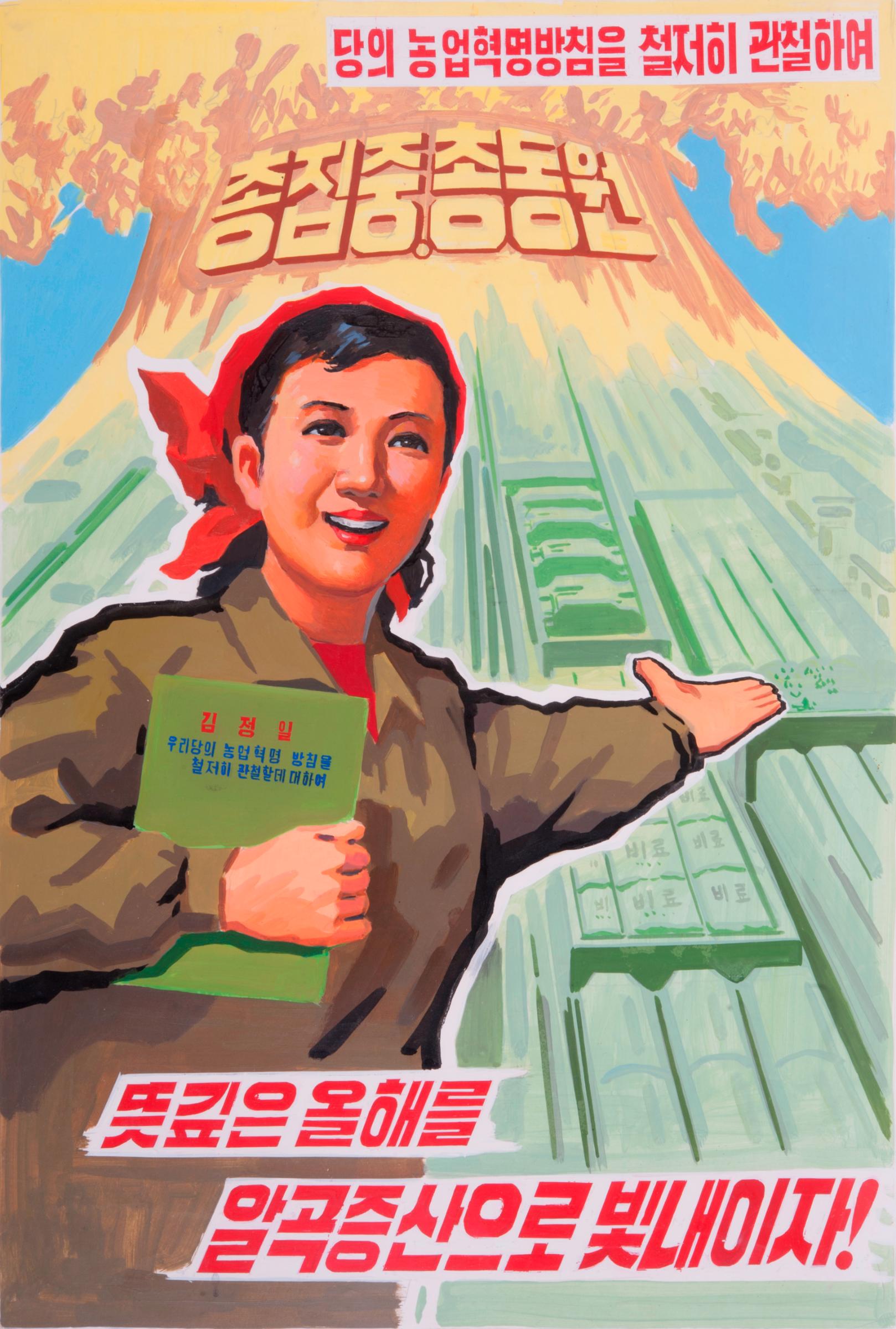
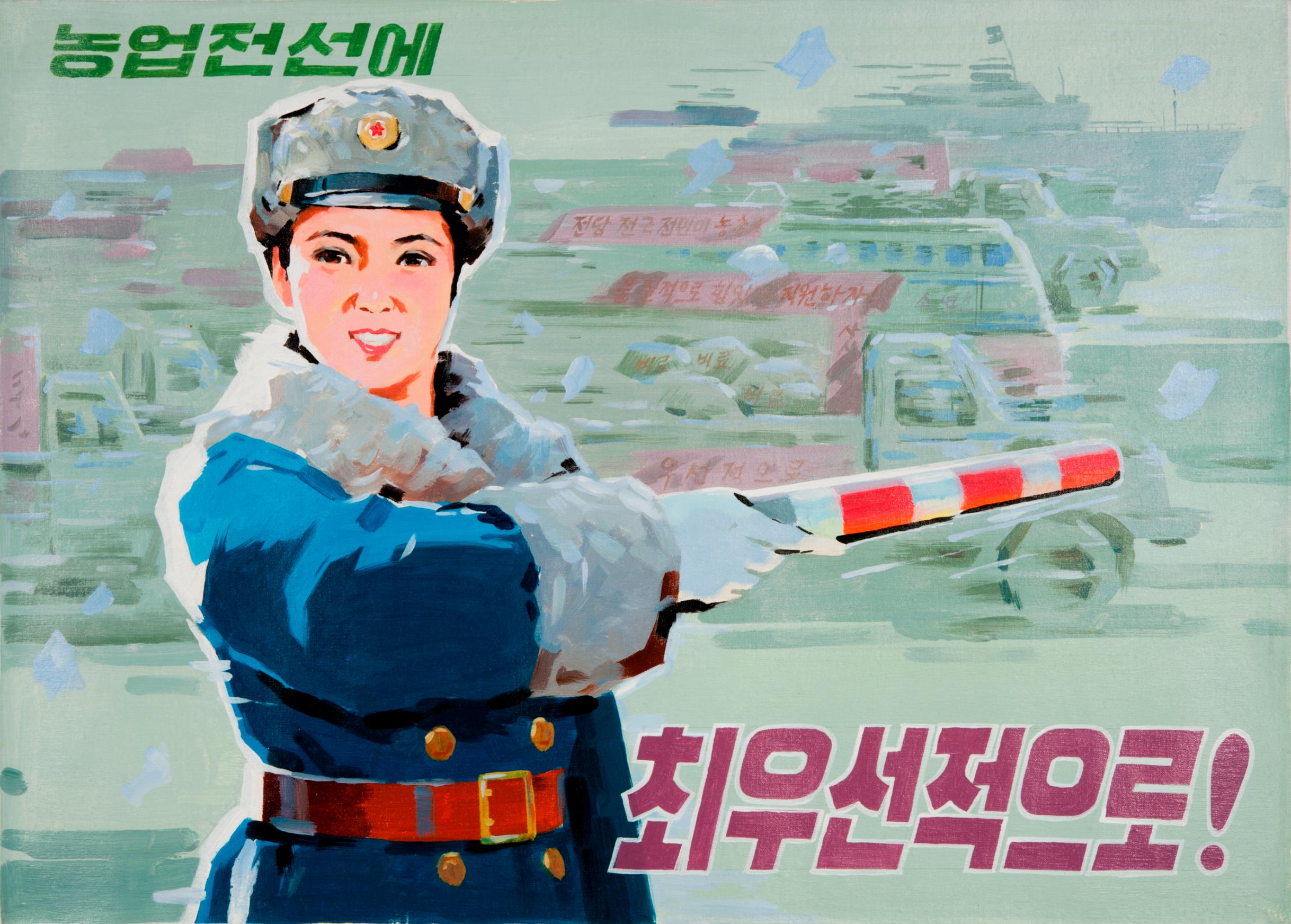
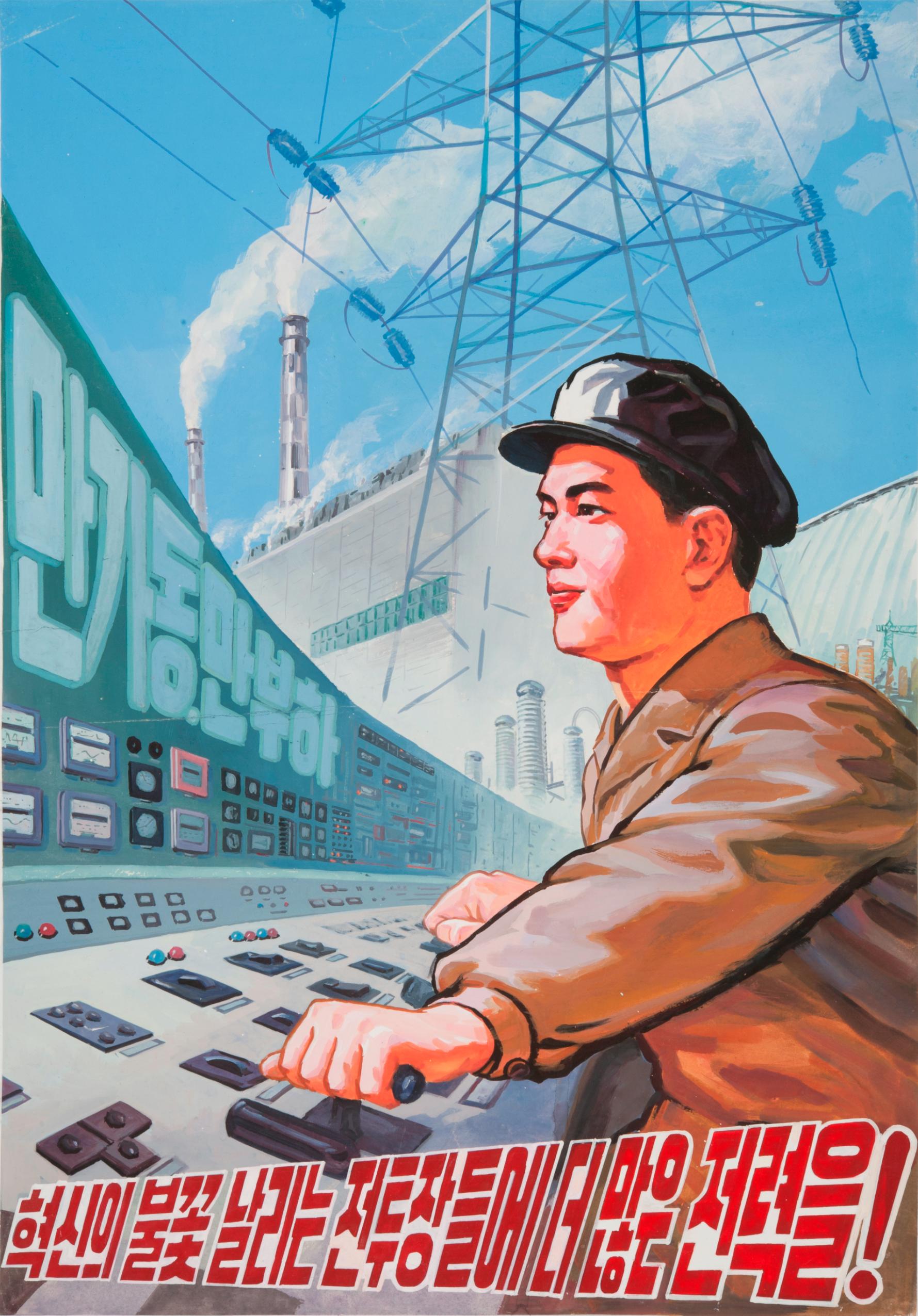
The artists draw from the traditions of socialist realism, a form of idealized modern realism imposed in the Soviet Union under Stalin. Typically they are hyper optimistic depictions of communist values.


The style of the posters have remained remarkably unchanged since the 1950s, despite industrial and scientific advances. The composition of the images stays unsophisticated: a figure in the foreground addressing the people, and a juxtaposing background that is very well defined, drawing the viewer in and making a clear and direct connection.


But even under the constraints (or “guidelines”) from the Leadership, artists are able to express themselves in a medium that is usually devoid of complex meaning and interpretation. Based on the five elements of wood, fire, earth, metal and water, the colors used are symbolic and hold meaning with the public. The Korean primary colors, called obangsaek, are red, blue, yellow, black, and white. Red symbolizes passion, as well as socialism and aggression. Blue conveys peace and harmony, as well as integrity, often found in posters for educational purposes. Yellow represents glory and prosperity, a prominent color in posters promoting agriculture and development. Black represents darkness and evil, used in many anti-American and anti-Japanese propaganda, and conversely white is the symbol of purity.

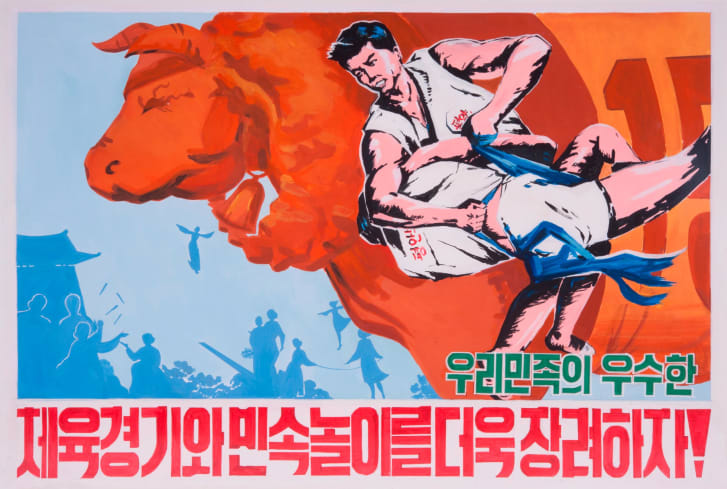
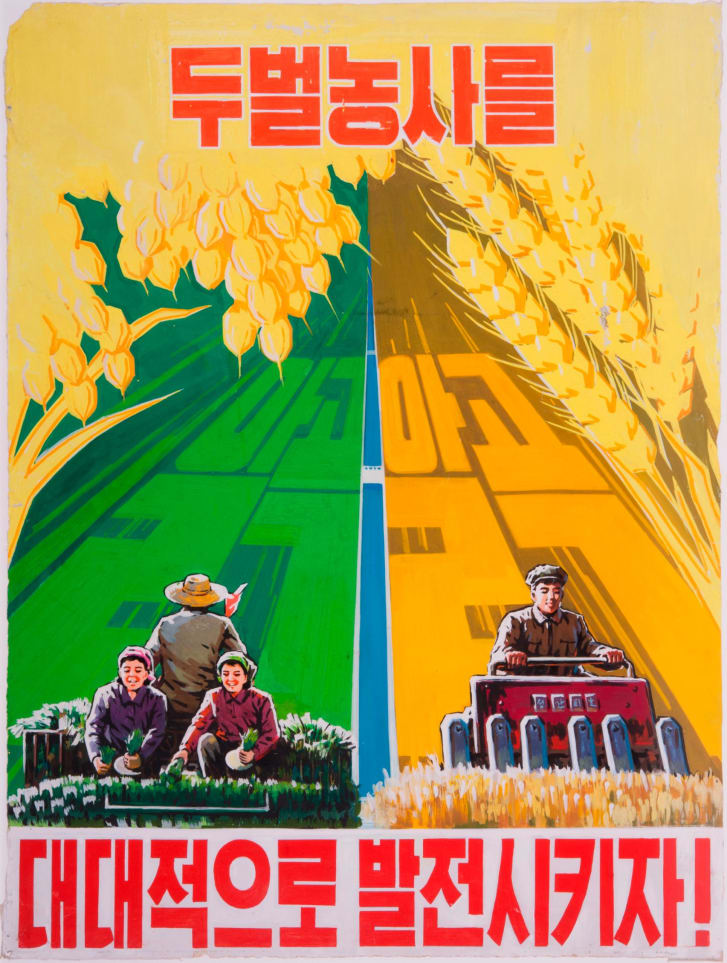
Aside from these posters, the government also sanctions artworks like landscape and still-life paintings and prints, depicting things like cheerful students, bountiful harvests, and the North Korean revolution of the workers’ paradise. Sometimes they seem implausible from a country that practices “systematic, widespread and gross human rights violations,” according to the United Nations. It’s hard to imagine North Korea as a place to admire art, and it may feel uneasy to realize that these paintings are more than just propaganda. They may not always be melodramatic war posters, propaganda can also be about bravery, innovation, and abundance, which perhaps is lacking in a country that is familiar with bouts of famine. If anything, these images complicate the one-dimensional view we often have of this country.
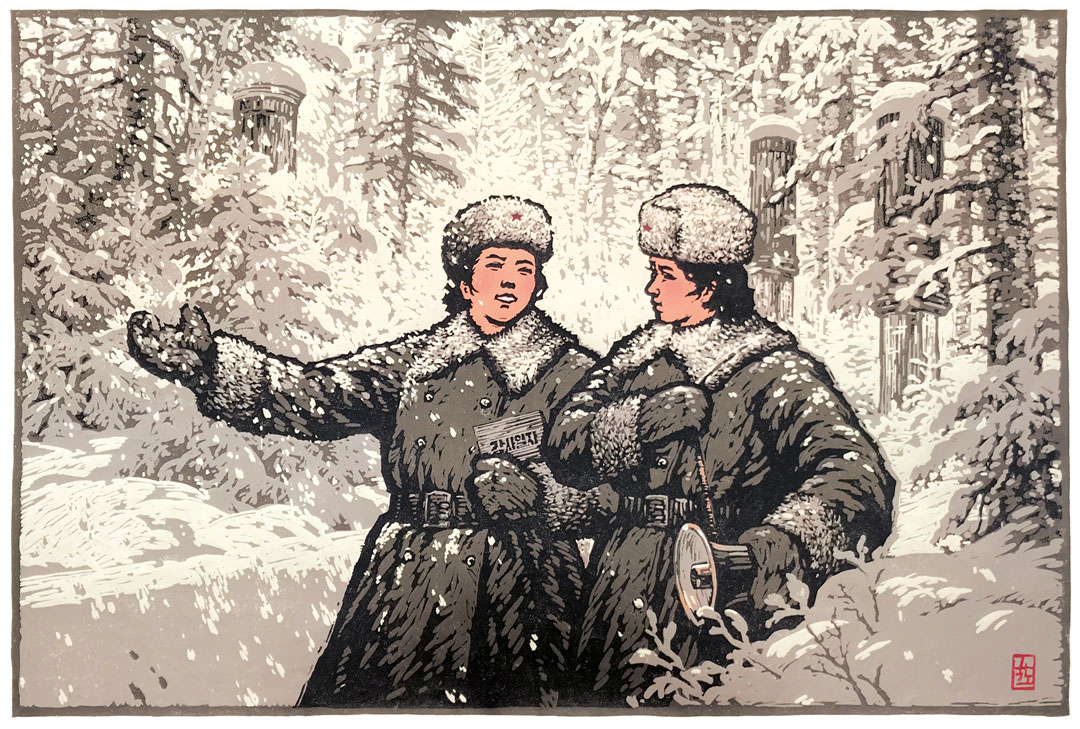
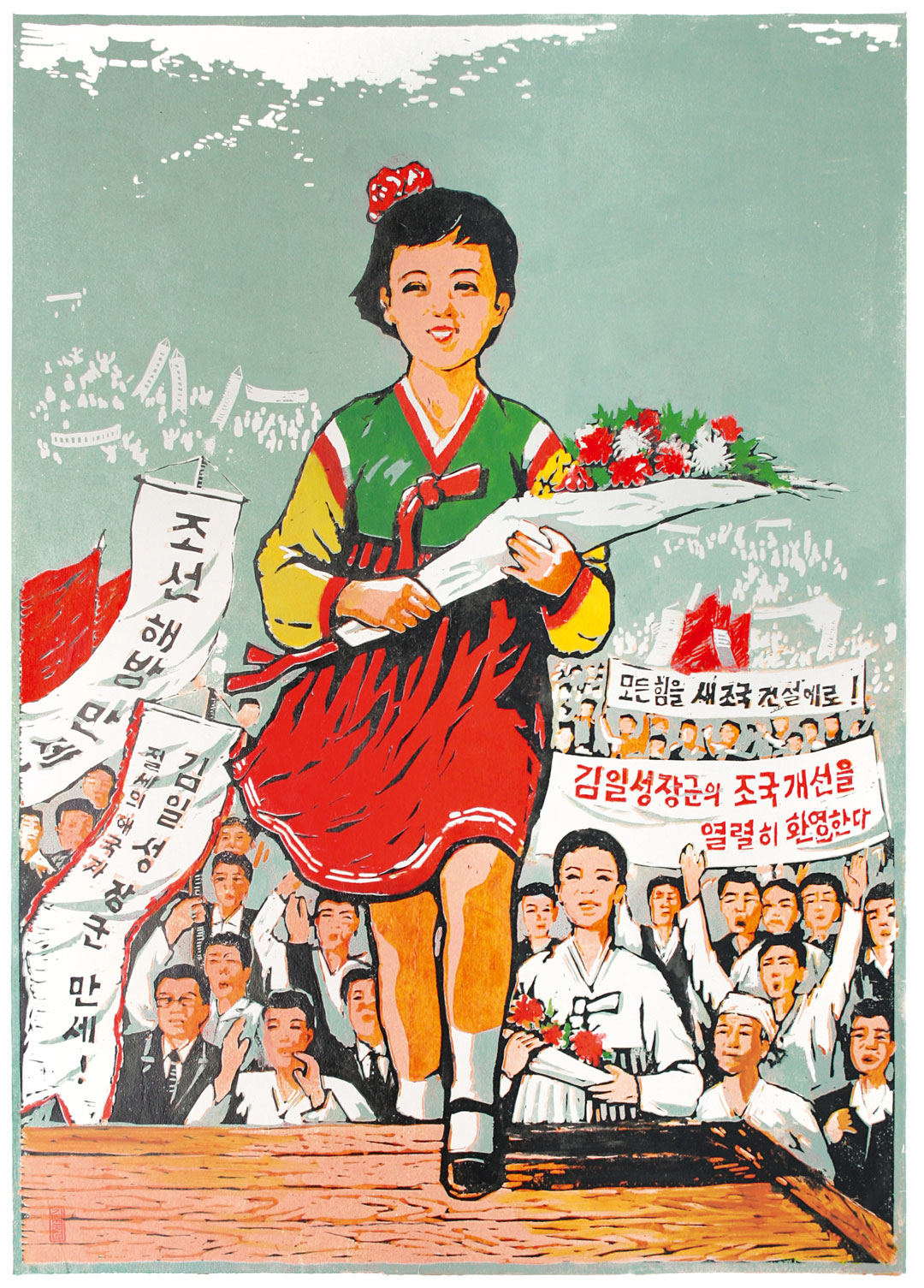
Citations
Rutherford, Paul. Endless Propaganda: The Advertising of Public Goods. Toronto: University of Toronto Press, 2000. Print.
Bernays, Edward L. Propaganda. New York: H. Liveright, 1928. Print.
Eastman, Nicholas J. Brand Consciousness: Late Capitalism and the Marketing of Misery. Ohio: Ohio Valley Philosophy of Education Society, 2020. Print.
“Socialist Realism.” Tate, Tate Collective. Accessed 2 December 2021. https://www.tate.org.uk/art/art-terms/s/socialist-realism
“Korean Color Symbolism.” Color Meanings, Jacob Olesen. Accessed 2 December 2021. https://www.color-meanings.com/korean-color-symbolism/
“What North Korean Propaganda Posters Reveal.” CNN Style, CNN, 1 January 2018. https://www.cnn.com/style/article/north-korea-propaganda-posters-design/index.html
“Propaganda.” Wikipedia, Wikimedia Foundation, 29 November 2021, https://en.wikipedia.org/wiki/Propaganda.